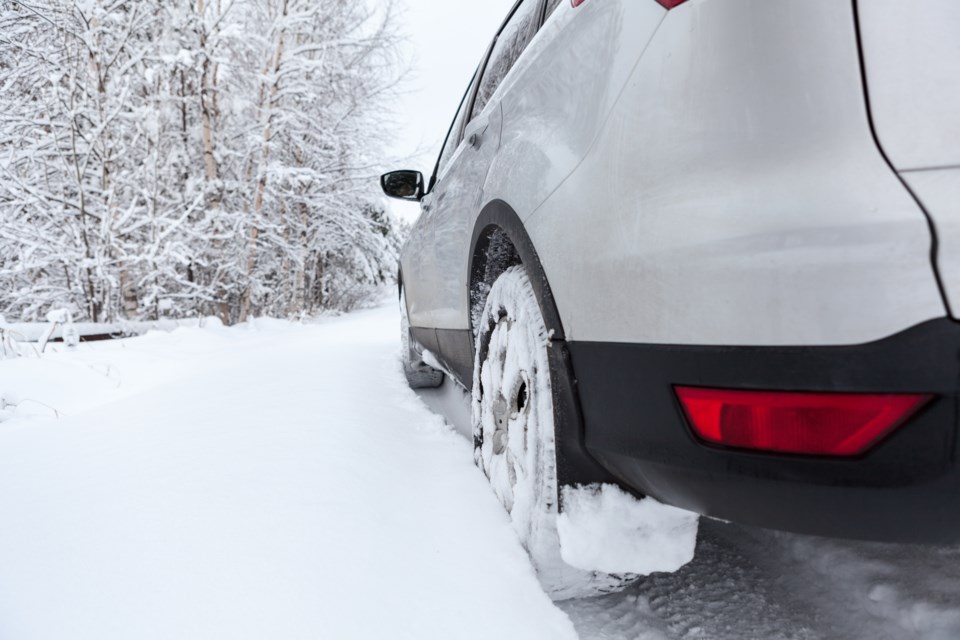Remote inland communities in the North rely on winter-road transport for their annual supply of bulky goods, fuel, and non-perishable food.
The TV program “Ice Road Truckers” exaggerated operating conditions, but they did illustrate the risk that rivers and lakes present. As warmer temperatures occur, remote communities and mines are realigning their traditional winter roads routes to avoid bodies of water and muskeg.
Muskeg contains compressed organic material that causes warmth to rise from the bottom to the top. Add warmer winter temperatures, because of climate change, and muskeg becomes more active.
Winter roads over muskeg are not freezing as deep, and some stretches thaw sporadically during the season. Consequently, safety has declined. In the last 2-3 years, many vehicles have broken through the ice and become stuck in the muskeg.
Climate change effects on weather patterns are also shortening the winter road season. Earlier snowfalls in fall before the muskeg is properly frozen are being observed. The snow acts as an insulator delaying the freeze up.
Winter roads last longer in the Arctic, but almost everywhere the season’s length has been cut in half. In Manitoba and Northwestern Ontario, the winter roads used to last 55 to 60 days during the 1990s. Now, they are lucky to be open for 20 to 30 days.
When road sections do not freeze properly, and near the end of the winter road season, safety hazards increase. Large and small vehicles can get stuck in the muskeg, people can be stranded in remote locations, vehicles can break through ice, and sadly, people can drown. The gathering momentum of climate change means that the end of the winter road network is already in sight.
Approximately 8000 kilometres of winter roads are built each year. It is economically impractical to convert the entire winter road network to gravel roads. The average cost of building an all-season gravel road in the Canadian Shield is between $3-to-$3.5 million per kilometre. Where all-season roads are necessary however, their costs of can be halved by using engineered wooden mat sections to bridge the muskeg, wetlands and soft areas.
Wooden roads to serve pipeline and transmission line construction were developed to transport high load bearing industrial equipment over thawed, soft, and, unstable ground. These roads are built from a series of interlocking sections, or mats. The costs of building access roads in the North can be diminished by placing wooden mats over the muskeg and other wetlands, while using traditional gravel construction on the higher ground.
The mat roads allow contractors to build infrastructure, do maintenance work, and move heavy payloads without harming the environment. These untreated wood mats can last over 25 years in the North where the ground is frozen two-thirds of the year.
Preliminary research suggests that a climate adaptive mat road system can also be used over thawing permafrost. These wooden structures that are 8-inches thick create an insulated road surface that helps keep the permafrost frozen much longer. Installed at ground level they also avoid heat loss that passes through the steep slopes side gravel road. Mat roads could help control the “active layer” of the permafrost, preventing slumping and increasing load bearing integrity.
Winter roads are becoming more unpredictable because of sporadic weather changes and higher average temperatures. For remote communities that depend on these life-lines the future is bleak. Necessities like construction materials cannot be flown in, while bringing fuel in by air quadruples its price.
The high-cost of freight transport boosts the price of food, leads of overcrowded housing, reduces the general welfare of the remote communities. Inaccessibility leads to high unemployment. Poverty creates food insecurity and malnutrition resulting in health issues such as diabetes. Isolation also leads to substance abuse and mental illness. Regretfully, suicide rates are quite high in some remote communities.
By integrating the wooden mat road technology over muskeg, peat lands, and unstable permafrost with gravel sections on higher ground can create more affordable, sustainable all-season roads. The North needs appropriate transportation technology to deal with the challenges of climate change. The future may be a combination of cargo airships providing the long-haul freight service to the North, and trucking over mat roads to link communities with airship transshipment points.
Two certainties are clear. Road-building technologies developed for the South and are inappropriate for the North. The problem of remoteness in the wake of climate change can no longer be ignored.
- Barry Prentice is a professor of supply chain management at the University of Manitoba and Northern Policy Institute, Research Advisory Board member.
